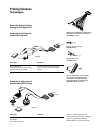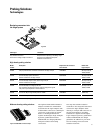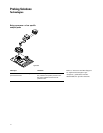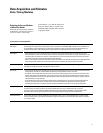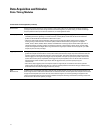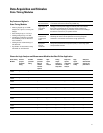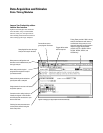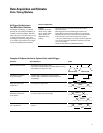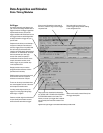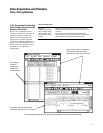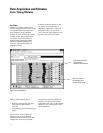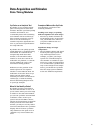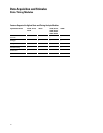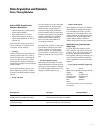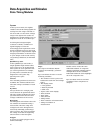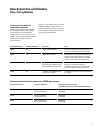
22
Data Acquisition and Stimulus
State/Timing Modules
Save and recall up to ten of your
custom trigger setups without loading
a new configuration file.
View current information on the state of
the timers, counters, flags, and the trigger
sequence level.
VisiTrigger
Your most commonly used triggers are
just a mouse click away with the built-in
trigger functions. VisiTrigger’s graphical
representation shows you how the
trigger condition will be defined. You can
use trigger functions as building blocks
to easily customize a trigger for your
specific task.
Sequence levels allow you to develop a
sequence of analyzer instructions to
specify a trigger point or to qualify data
and store only the information that
interests you. Each step in the sequence
contains an "IF/THEN/ELSE" structure
that can evaluate up to four logic
events. Each event can specify a
combination of actions such as: store
sample, increment counters, reset
timers, trigger, or go to another step
in the sequence level.
Ranges provide a way to monitor
program and data accesses within a
specified area in memory.
Global counters can count events such
as the number of times a function
executes or accesses an I/O port.
Timers can be set up to evaluate when
one event happens too late or too soon
with respect to another event.
In timing mode, edge terms let you
trigger on a rising edge, falling edge,
either edge, or a glitch.
Patterns and their logical combinations
let you identify which states to store,
when to branch and when to trigger.
Flags can be set, cleared and evaluated by
any 16715A/16A/17A/40A/41A/42A/50A/
51A/52A/60A module in the frame. This
allows you to set up a trigger that is depend-
ent on activity from more than one bus in the
system.
Values can be easily entered directly into
the trigger description.
Figure 4.2. Set up your trigger in terms of the measurements you want to make.



